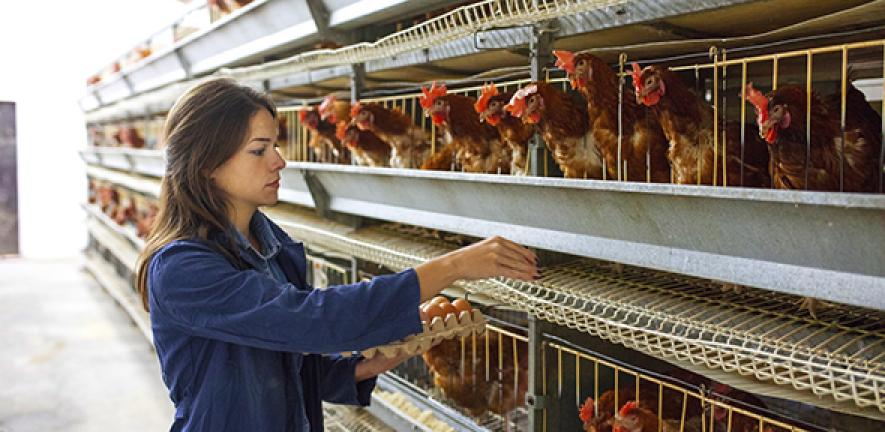
Scientists evaluate the evidence that intensive livestock farming is causing pandemics, and find that intensive farming could actually reduce the risk of future pandemics compared to 'free-range' farming.
Scientists evaluate the evidence that intensive livestock farming is causing pandemics, and find that intensive farming could actually reduce the risk of future pandemics compared to 'free-range' farming.
Those calling for a move away from intensive farming often fail to consider the counterfactual
Harriet Bartlett
In the wake of COVID-19, many have pointed to modern industrial farms with tightly-packed livestock as potential hothouses for further pandemics caused by 'zoonotic' diseases: those transmitted from animals to humans.
However, researchers now argue that free-range alternatives, which require far more land, would increase encroachment on natural habitats and create ever more potential for diseases carried by wild animals to come into contact with humans and jump the species barrier.
In a paper in Royal Society Open Science, a team of scientists led by Cambridge University found a lack of sufficient evidence to conclude which way of farming is least risky, and say there is evidence that the move away from intensive farming might actually increase the risk of pandemics. They call for more research to be done before changing policies or incentivising a particular type of farming.
"High-yield or ‘intensive’ livestock farming is blamed for pandemics, but those calling for a move away from intensive farming often fail to consider the counterfactual – the pandemic risk of farming less intensively and particularly the consequences for land use,” said lead author Harriet Bartlett, a PhD candidate at Cambridge's Department of Zoology.
“Low-yield farms need far more land to produce the same amount of food compared with high-yield farms. A widespread switch to low-yield farming would result in the destruction and disturbance of vast areas of natural habitats. This increases the risk of viral spillover by disturbing wildlife that may well host the next pandemic virus and increasing contact between wildlife, people and livestock," Bartlett said.
The researchers point out that, globally, we now produce four times more meat than we did in the 1960s. Most of our meat, eggs and dairy now come from intensive farms, but such farms are thought be risky due to their crowded conditions which increase the chance of diseases ‘taking off’ and spreading rapidly.
However, intensive farms need less land than extensive, or ‘free-range’, farms to produce the same amount of food – both to grow their feed and to rear their animals.
Growing demand for livestock products has caused dramatic habitat loss, say the researchers, which means we are now farming in places where livestock and people are coming into frequent contact with wildlife. They say that this contact with increasingly disturbed, stressed, and infected wildlife makes the spillover of zoonotic viruses into people or livestock more likely.
"If we were to switch from the current system to one based on extensive farming, we would need substantially more land to meet demand – resulting in the conversion of habitat roughly the size of Brazil and India between 2009 and 2050," said paper co-author Prof Andrew Balmford. "This could increase the contact between people, livestock and stressed wildlife – including wildlife that might well host the next pandemic virus."
"Intensive farms may have a greater risk of takeoff, but extensive farms may have greater risk of spillover," he said.
The researchers say that, worryingly, we simply do not know which risk is more important for preventing future pandemics, and so it is currently impossible to determine which types of farms carry least risk overall.
Added Bartlett: "COVID-19 has demonstrated the huge potential impact of zoonotic diseases, and this study highlights that more research is urgently needed to identify how we minimise the risk of another pandemic."
Reference:
Bartlett H, Holmes MA, Petrovan SO, Williams DR, Wood JLN, Balmford A. 2022 Understanding the relative risks of zoonosis emergence under contrasting approaches to meeting livestock product demand. R. Soc. Open Sci. 9: 211573. https://doi.org/10.1098/rsos.211573

The text in this work is licensed under a Creative Commons Attribution 4.0 International License. Images, including our videos, are Copyright ©University of Cambridge and licensors/contributors as identified. All rights reserved. We make our image and video content available in a number of ways – as here, on our main website under its Terms and conditions, and on a range of channels including social media that permit your use and sharing of our content under their respective Terms.




